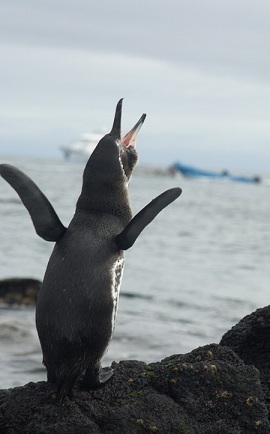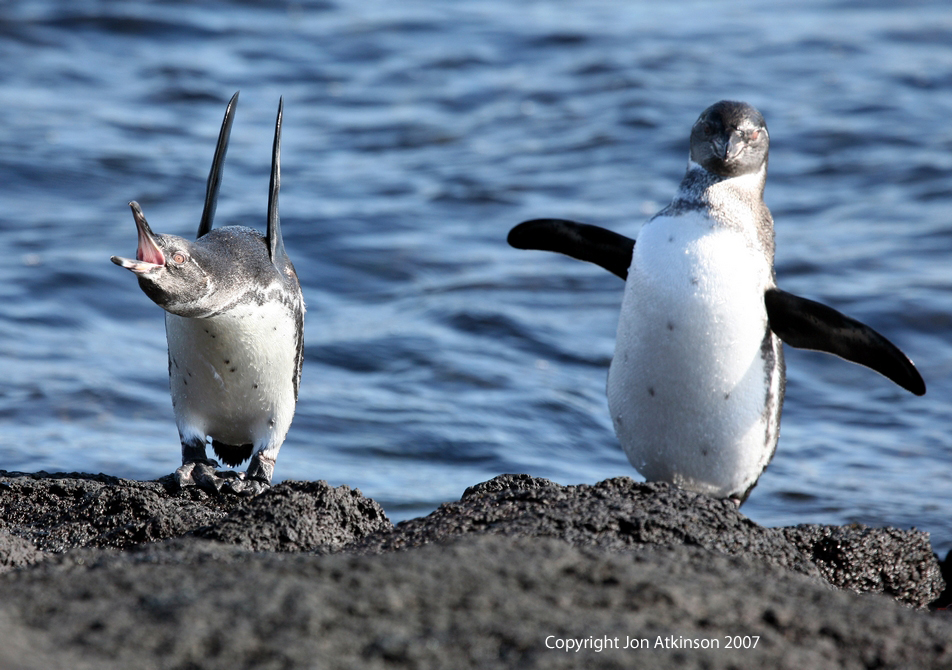Latin America
Related: About this forumGalapagos penguin numbers recovering with shifts in trade winds and ocean currents
Wednesday, August 5th 2015 - 08:13 UTC
Galapagos penguin numbers recovering with shifts in trade winds and ocean currents
Shifts in trade winds and ocean currents powered a resurgence of endangered Galapagos Penguins over the past 30 years, according to a new study led by researchers at the Woods Hole Oceanographic Institution (WHOI). These changes enlarged a cold pool of water the penguins rely on for food and breeding-an expansion that could continue as the climate changes over the coming decades, according to the study.

[font size=1]
The Galapagos Islands, a chain of islands 1,000
kilometers west of mainland Ecuador, are home
to the only penguins in the Northern Hemisphere.
[/font]
The Galapagos Islands, a chain of islands 1,000 kilometers west of mainland Ecuador, are home to the only penguins in the Northern Hemisphere. The 48-centimeter tall black and white Galapagos Penguins landed on the endangered species list in 2000 after the population plummeted to only a few hundred individuals and are now considered the rarest penguins in the world.
Most of the penguins live on the archipelago's westernmost islands, Isabela and Fernandina, where they feed on fish that live in a cold pool of water on the islands' southwestern coasts. The cold pool is fed by an ocean current, the Equatorial Undercurrent, which flows toward the islands from the west. When the current runs into Isabela and Fernandina, water surges upward, bringing cold, nutrient-rich water to the surface.
New research suggests shifts in wind currents over the past three decades, possibly due to climate change and natural variability, have nudged the Equatorial Undercurrent north. The changing current expanded the nutrient-rich, cold water farther north along the coasts of the two islands, likely bolstering algae and fish numbers in the cold pool. This allowed the penguin population to double over the past 30 years, swelling to more than 1,000 birds by 2014, according to the new study.
Climate change could further shift wind patterns and ocean currents, expanding cold water further north along the coasts of Isabela and Fernandina and driving fish populations higher, according to the new study.
More:
http://en.mercopress.com/2015/08/05/galapagos-penguin-numbers-recovering-with-shifts-in-trade-winds-and-ocean-currents
[center]



Galapagos penguins.[/center]
Environment & Energy:
http://www.democraticunderground.com/112789538
emsimon33
(3,128 posts)Thank you!
Judi Lynn
(160,591 posts)[center]  [/center]
[/center]
shenmue
(38,506 posts)Judi Lynn
(160,591 posts)[center] [/center]
[/center]